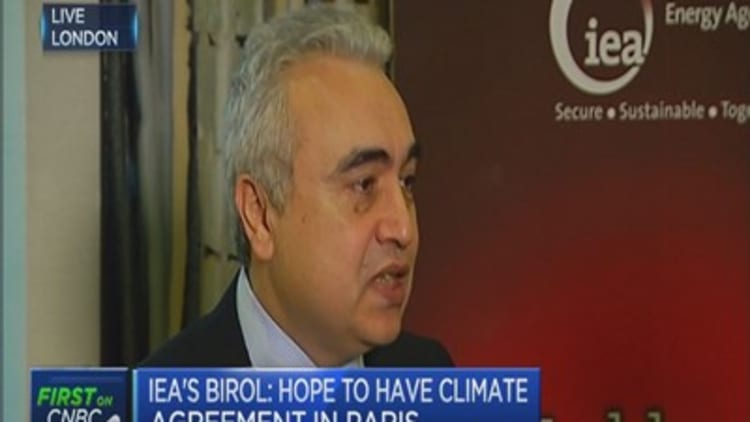Humans worried about climate change are getting some help from Earth — for now.
Earth's land and ocean currently absorb about half of all carbon dioxide emissions from the burning of fossil fuels and other sources. But the amount of carbon entering the atmosphere may be changing nature in ways that leave scientists uncertain whether the planet can keep absorbing even that amount of carbon in the future.

Since the Industrial Revolution, carbon levels have increased 2.5 times to more than 400 parts per million at present, said Michael Freilich, director of NASA's Earth Science Division, in a call with reporters Thursday. That is higher than it has been in the last 400,000 years.
He added that scientists know, from ice cores and other information, that carbon levels in the atmosphere hovered between 180 and 280 parts per million until about the 1800s.
Freilich and his colleagues at NASA and other institutions discussed the need for more research into how the planet absorbs greenhouse gases, such as carbon dioxide. They also discussed new evidence taken from Orbiting Carbon Observatory-2 — NASA's first satellite designed to measure carbon dioxide "from the top of Earth's atmosphere to its surface," according to a NASA press release.
The data from space gives a significant advantage in getting an idea of the total carbon cycle around the entire planet, said Annmarie Eldering, OCO-2 deputy project scientist at NASA's jet propulsion laboratory in Pasadena, California.
On average about half of all of the carbon that enters the atmosphere is absorbed by the ocean or by forests — though that can vary, and some evidence suggests the increased levels of carbon in the ocean may be creating conditions — such as raised acidity levels in seawater — that are making it more difficult to absorb carbon, said Scott Doney, chair of the Marine Chemistry and Geochemistry Department of the Woods Hole Oceanographic Institute.
"The land and the ocean are really doing us a big favor," said Lesley Ott, an atmospheric scientist in the Global Modeling and Assimilation Office at NASA's Goddard Space Flight Center in Greenbelt, Maryland, in a press release. "Otherwise you would have carbon building up in the atmosphere twice as fast as it does now."
Forests on land — increasingly prone to wildfires — may be emitting more carbon than they take in, as well. Wildfires were rampant across much of the western United States in 2015. Research released this year said wildfire seasons are lasting longer almost everywhere on the planet. Even Alaska saw an unusually high number of wildfires this year.
Warming is also causing permafrost on the world's tundras to thaw, which is releasing greenhouse gases into the atmosphere as well, according to research.
Even natural gas harvesting is leaking small amounts of methane into the air, and there are questions about whether that could be making any contribution to the total amounts of gases in the air, Doney said.
And natural processes — including weather patterns and periodic climate phenomena such as El Niño — have been seen to have some kind of effect on atmospheric carbon levels, but scientists need to study this further.
Added together, these factors may have considerable effects on the natural processes that absorb carbon, and on the effects of higher carbon levels in the atmosphere.
NASA has been working on several projects that are attempting to get an accurate assessment of the carbon cycle around the globe. They hope they will be able to provide policymakers with more accurate data in the future. Atmospheric carbon levels will be a major topic of discussion at the United Nations climate conference scheduled for Paris in a few weeks.




